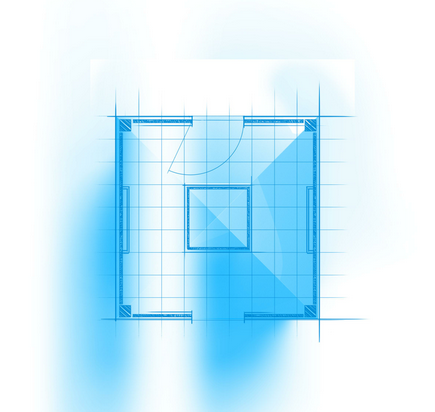by Ruth Diab Lederer
How’s your life? Your health, relationships, personal growth, finances? Are you moving in your intended direction? Unless you have the good fortune to reside in a special place, chances are things could use improvement.
We live, work and play in a variety of spaces. Do these spaces comfort, support and enliven us? What if there was a design system focused on delivering comfort, support and liveliness? How would it feel to live, work and play in spaces designed to provide these attributes?
The rishis of ancient India knew how to deliver such perfect attributes architecturally. They designed homes, public buildings and towns using the architectural system described in the Vaastu Shastras. Fortunately this system is coming into prominence once again in both India and the West.
Imagine the universe as an infinite field of energy waves, and picture yourself as a unique wave pattern with peaks and troughs. Every person and place you encounter either complements or collides with your particular wave. When the wave is complementary, you will feel emotionally and physically balanced. Alternatively, when the wave is a contrast you will most likely feel unsettled.
Now think of this wave pattern as it pertains to a building. Every structure has a specific wave pattern (such as light waves, sound waves, or the waves that result from our heartbeats). A building constructed according to the prescriptive methods of the Vaastu Shastras has been designed with extraordinary care with regard to its wave pattern.
Among the initial considerations are the physical orientation of the structure (to true north), the quality of the land on which it will be built (clean and vibrant) and the slope of the land that will support the structure (level is best). The perimeter of the building is calculated to provide wealth, physical welfare, fearlessness, happiness, friendship, physical comfort and mental peace. If the structure is a family home, each person is considered in the perimeter calculation, with prominence given to the female head of the family. As some people say, “If the momma is happy, everybody’s happy.”
Depending on the availability of space, Vaastu structures can be as small as 3 feet square or as large as an auditorium. In the Western world, it is common for people to build garden cottages about 7 feet square with a cathedral ceiling of about 9 feet at the peak.
The Vaastu effect is most powerful when a person can inhabit the space, although just being in the nearby vicinity can deliver benefits. Several homes of about 2,500 square feet now dot the landscape in Patagonia, a small town in Southern Arizona. Residents have reported an improved quality of life in the town, as more people are engaging in social activities and businesses have reported gains.
Ruth Diab Lederer is the principal of Vaastu Consultants. Contact ruth@vaastupartners.com for more information or to visit a newly built Vaastu cottage in Lake Bluff, Ill.


























No Responses to “Build a Happier Home: Creating Harmony with Vaastu”